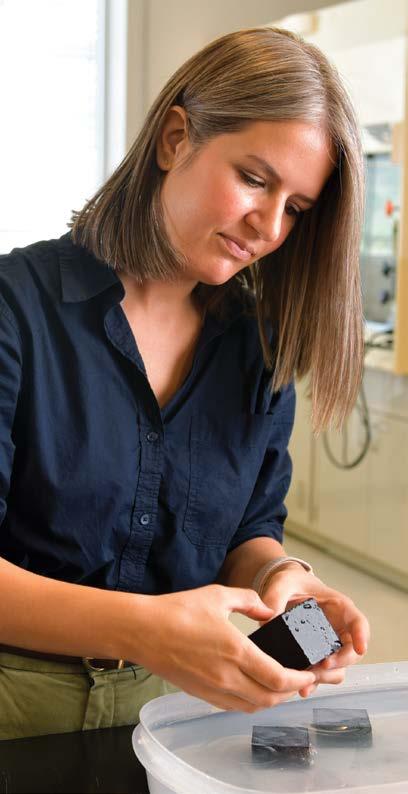
2 minute read
CREATING HYDROGEN MEMBRANES FOR USE IN NUCLEAR FUSION POWER PLANTS

Fusion, the process that powers the sun and the stars, has long been a part of the conversation about low-carbon sources of electricity. Unlike nuclear power generated through fission, less waste is generated as a byproduct of fusion. However, there isn’t currently a process that successfully produces power through fusion in a way that is cost effective, efficient and safe.
“Fusion is the technology that’s always been 20 years away,” said Colin Wolden, professor of chemical and biological engineering. “However, scientists have recently advanced the fusion gain energy factor to the breakeven point where the power released by the fusion reactions matches that required to sustain the plasma. ITER, the international research collaboration located in France, has targeted achieving the level necessary for practical power generation by the end of the decade. The U.S. startup Commonwealth Fusion Systems has raised more than $2 billion to commercialize this technology within a similar time frame. Wind and solar are the bridge for the next 20 to 50 years, but fusion power could be the ultimate solution to the sustainable energy question.”
A project led by Wolden that began at Mines in January 2021 and is funded by the Advanced Research Projects AgencyEnergy (ARPA-E) might be a key part in making fusion a realistic source of clean energy in the future.
The project’s focus is not on the fusion process itself, but on generating and purifying the hydrogen isotopes that are the fuel for a fusion reactor. In the sun, four hydrogen atoms are fused together to form helium, which is accompanied by a very small loss of mass that generates tremendous amounts of energy as described by Einstein’s theory of relativity equation. On Earth, this process is recreated in a magnetically confined plasma using the hydrogen isotopes deuterium and tritium. In the plasma reactor, only a fraction of these isotopes are converted into helium, so a critical requirement for practical deployment is to efficiently separate the unreacted isotopes from helium and recycle them back to the fusion reactor. Wolden’s team is developing composite membranes for this purpose.
Membranes are often used to purify hydrogen for fuels cells or in the chemical process industry, but the ones Wolden and his team are creating are tailored to operate in the environment of a fusion power plant. The composite membranes are based on low-cost metal foils, such as vanadium or iron, whose surfaces must then be modified to facilitate the transport of hydrogen while withstanding exposure to plasma radiation and high-temperature molten salts. Wolden’s group is using tools of the semiconductor industry, such as reactive sputtering and atomic layer deposition, to modify surfaces and create the catalytic layers that enable such performance.
Wolden said creating a successful membrane could enable a lower cost and more secure fusion energy system and potentially aid in making fusion power plants a reality. Working in collaboration with other teams and industry partners within the ARPA-E umbrella, the goal is to have efficient isotope processing technologies ready for deployment as fusion energy systems advance.
“Fusion has the potential to be an infinite carbon-free power source,” Wolden said. “This may be the longterm solution.”










